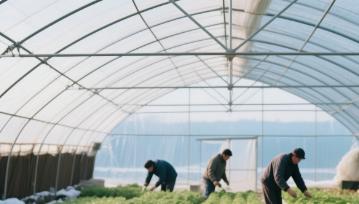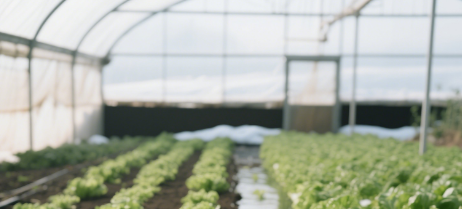Hey, greenhouse growers! When it comes to winter lettuce farming, do you go for traditional soil cultivation or high-tech hydroponics? Both methods have their pros and cons, and choosing the right one can make a big difference in your yield and effort. Let's dive into the details and see how each method stacks up, especially when it comes to dealing with cold temperatures and low light in winter.
Soil Cultivation: The Cost-Effective Choice
Soil cultivation is the classic way to grow lettuce. It's super affordable—you just need some soil, fertilizer, and basic gardening tools, and you're good to go. This method is perfect for beginners because it doesn't require any fancy equipment or complex techniques. All you need to know is how to fertilize, water, and weed, and you can start growing.
But soil cultivation does come with some challenges. In winter, the cold soil can slow down root growth, so you might need to cover the soil with mulch or use a heater to keep it warm. Pests and weeds in the soil can also be a problem, so regular disinfection and weeding are a must. Despite these issues, soil cultivation is still a solid choice for those looking to keep costs low and get started with minimal hassle.

Hydroponics: The High-Yield Tech Solution
Hydroponics is like the “smart farming” option. Instead of soil, plants grow in a nutrient-rich liquid solution. This method allows you to precisely control the nutrients, temperature, and pH levels of the solution, giving your lettuce the perfect growing conditions. As a result, you can expect higher yields and better quality produce. Plus, hydroponic systems are less prone to pests and diseases because they're sterile and enclosed.
Another cool thing about hydroponics is that it saves space. You can set up vertical growing systems, which is great for maximizing your greenhouse area. However, hydroponics isn't without its downsides. Setting up a hydroponic system can be expensive, with costs for equipment, pipes, and nutrient solutions adding up quickly. Plus, the system needs regular maintenance, and any equipment failure can disrupt the whole setup.
Tackling Low Temperatures in Hydroponic Lettuce
Cold weather can be tough on hydroponic lettuce, but there are ways to beat the chill. You can use heating devices to keep the nutrient solution at a cozy 18 - 22°C, creating a warm environment for your plants. Installing insulation curtains or shade nets in your greenhouse can also help retain heat and stabilize the temperature inside. For an eco-friendly option, you can even tap into geothermal energy by using underground pipes to transfer heat from groundwater to the nutrient solution.

Dealing with Frost and Low Light in Soil-Grown Lettuce
Winter frost and low light are big hurdles for soil-grown lettuce. To keep frost at bay, you can install heaters like hot water boilers or electric heaters in your greenhouse to maintain a temperature above 0°C. Mulching the soil surface not only keeps it warm but also reduces water evaporation. To combat low light, artificial lighting, such as LED grow lights, can provide the extra light your lettuce needs to grow. Adjusting planting density to ensure each plant gets enough light is another smart move.
Soil and hydroponics each have their strengths. Soil cultivation is cheap and adaptable but requires more labor and management. Hydroponics offers precise environmental control and higher yields but comes with a high initial cost and technical demands. Choose the method that fits your budget, skills, and scale. With the right approach, you can enjoy a bountiful winter lettuce harvest!

Post time: May-25-2025







 Click to Chat
Click to Chat